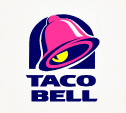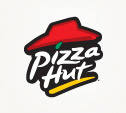Yum Brands: Navigating Challenges with Resilience and Innovation
May 3, 2025, 1:13 am
Yum Brands, the parent company of KFC, Taco Bell, and Pizza Hut, recently reported mixed financial results for the first quarter of 2025. The company’s performance reflects a complex landscape shaped by competition, consumer behavior, and economic pressures. As the fast-food giant navigates these challenges, its strategies reveal a commitment to innovation and adaptability.
In a world where fast food is king, Yum Brands stands as a titan. But even giants face storms. The company’s latest earnings report paints a picture of resilience amid turbulence. Yum Brands reported a 12% increase in net sales, reaching $1.79 billion. However, not all brands within the portfolio shone equally. Pizza Hut, a cornerstone of the company, struggled with a 2% decline in same-store sales, falling short of expectations. This dip is a stark reminder that even the most established names can falter.
KFC and Taco Bell, however, showcased a different narrative. Taco Bell emerged as a beacon of growth, boasting a 9% increase in same-store sales. The chain’s ability to attract diners across various income levels speaks volumes about its marketing and menu strategies. New items like the Steak and Queso Crunchwrap sliders and Crispy Chicken Nuggets have captured consumer interest, driving traffic to its locations. In contrast, KFC’s performance was mixed. While international sales grew, the U.S. market faced challenges, with a 1% decline in same-store sales. The competition is fierce, with rivals like Wingstop and Raising Cane’s gaining ground.
Yum Brands’ CEO, David Gibbs, remains optimistic. He highlights the company’s adaptability in a shifting landscape. The fast-food industry is not for the faint-hearted. It requires constant innovation and a keen understanding of consumer preferences. Digital orders now account for 55% of Yum’s total sales, a testament to the growing trend of convenience-driven dining. This shift towards technology is not just a response to consumer demand; it’s a strategic move to streamline operations and enhance customer experience.
Amid these challenges, Yum Brands faces external pressures, particularly from geopolitical tensions and trade tariffs. However, Gibbs asserts that the company is largely insulated from these issues. Most of its supply chain is sourced domestically, which mitigates the impact of tariffs. This strategic positioning allows Yum to focus on its core operations without the added burden of international trade conflicts. The company has not observed any significant consumer backlash against its brands, even in markets where anti-American sentiment could pose a risk.
The fast-food landscape is evolving. Consumers are more discerning than ever. They seek quality, convenience, and value. Yum Brands recognizes this shift and is adapting accordingly. The partnership with Nvidia to integrate artificial intelligence into operations is a bold step forward. More than 500 Taco Bell locations now utilize voice AI in their drive-thrus. This innovation not only enhances the customer experience but also reduces employee turnover. It’s a win-win scenario that positions Yum Brands at the forefront of technological advancement in the industry.
Yet, the road ahead is not without obstacles. The company anticipates lower profit growth in the first half of 2025, partly due to one-time expenses. The upcoming global franchise convention in Australia is one such expense. Despite these challenges, Yum Brands remains committed to its long-term target of 8% core operating profit growth. This ambitious goal reflects the company’s confidence in its strategic direction and operational capabilities.
As Yum Brands navigates these waters, leadership changes loom on the horizon. Gibbs has announced plans to retire in early 2026, prompting the board to search for his successor. This transition could bring new perspectives and strategies to the company, further shaping its future in a competitive market.
In conclusion, Yum Brands stands at a crossroads. The company’s recent performance illustrates the duality of success and struggle. While Pizza Hut grapples with declining sales, Taco Bell shines brightly. The integration of technology and a focus on consumer preferences are vital to the company’s strategy. As Yum Brands moves forward, it must remain agile, innovative, and responsive to the ever-changing landscape of the fast-food industry. The journey ahead may be fraught with challenges, but with resilience and a commitment to excellence, Yum Brands is poised to thrive.
In a world where fast food is king, Yum Brands stands as a titan. But even giants face storms. The company’s latest earnings report paints a picture of resilience amid turbulence. Yum Brands reported a 12% increase in net sales, reaching $1.79 billion. However, not all brands within the portfolio shone equally. Pizza Hut, a cornerstone of the company, struggled with a 2% decline in same-store sales, falling short of expectations. This dip is a stark reminder that even the most established names can falter.
KFC and Taco Bell, however, showcased a different narrative. Taco Bell emerged as a beacon of growth, boasting a 9% increase in same-store sales. The chain’s ability to attract diners across various income levels speaks volumes about its marketing and menu strategies. New items like the Steak and Queso Crunchwrap sliders and Crispy Chicken Nuggets have captured consumer interest, driving traffic to its locations. In contrast, KFC’s performance was mixed. While international sales grew, the U.S. market faced challenges, with a 1% decline in same-store sales. The competition is fierce, with rivals like Wingstop and Raising Cane’s gaining ground.
Yum Brands’ CEO, David Gibbs, remains optimistic. He highlights the company’s adaptability in a shifting landscape. The fast-food industry is not for the faint-hearted. It requires constant innovation and a keen understanding of consumer preferences. Digital orders now account for 55% of Yum’s total sales, a testament to the growing trend of convenience-driven dining. This shift towards technology is not just a response to consumer demand; it’s a strategic move to streamline operations and enhance customer experience.
Amid these challenges, Yum Brands faces external pressures, particularly from geopolitical tensions and trade tariffs. However, Gibbs asserts that the company is largely insulated from these issues. Most of its supply chain is sourced domestically, which mitigates the impact of tariffs. This strategic positioning allows Yum to focus on its core operations without the added burden of international trade conflicts. The company has not observed any significant consumer backlash against its brands, even in markets where anti-American sentiment could pose a risk.
The fast-food landscape is evolving. Consumers are more discerning than ever. They seek quality, convenience, and value. Yum Brands recognizes this shift and is adapting accordingly. The partnership with Nvidia to integrate artificial intelligence into operations is a bold step forward. More than 500 Taco Bell locations now utilize voice AI in their drive-thrus. This innovation not only enhances the customer experience but also reduces employee turnover. It’s a win-win scenario that positions Yum Brands at the forefront of technological advancement in the industry.
Yet, the road ahead is not without obstacles. The company anticipates lower profit growth in the first half of 2025, partly due to one-time expenses. The upcoming global franchise convention in Australia is one such expense. Despite these challenges, Yum Brands remains committed to its long-term target of 8% core operating profit growth. This ambitious goal reflects the company’s confidence in its strategic direction and operational capabilities.
As Yum Brands navigates these waters, leadership changes loom on the horizon. Gibbs has announced plans to retire in early 2026, prompting the board to search for his successor. This transition could bring new perspectives and strategies to the company, further shaping its future in a competitive market.
In conclusion, Yum Brands stands at a crossroads. The company’s recent performance illustrates the duality of success and struggle. While Pizza Hut grapples with declining sales, Taco Bell shines brightly. The integration of technology and a focus on consumer preferences are vital to the company’s strategy. As Yum Brands moves forward, it must remain agile, innovative, and responsive to the ever-changing landscape of the fast-food industry. The journey ahead may be fraught with challenges, but with resilience and a commitment to excellence, Yum Brands is poised to thrive.


